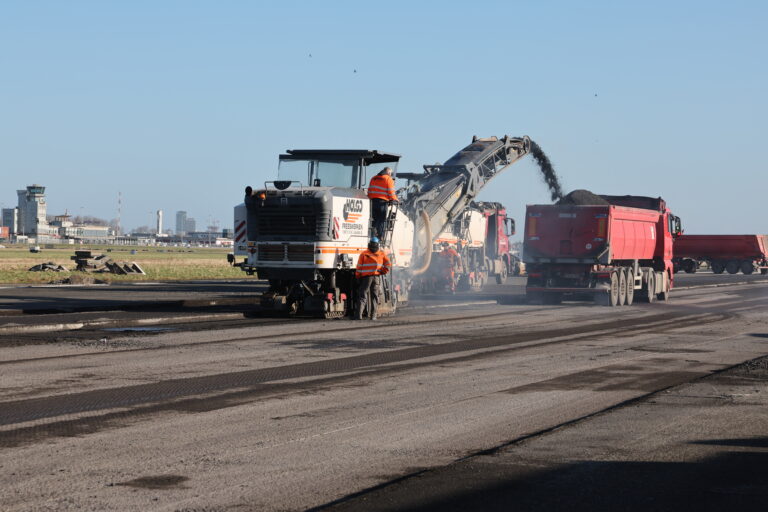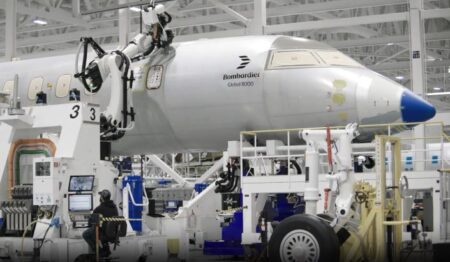The renovation of the runway at Ostend-Bruges Airport has commenced, marking a significant development for the airport.
The airport will remain temporarily closed for renovations from January 25, to March 27. The project is commissioned by the Flemish Airport Development Company (LOM) and is essential to ensure the safety of future air traffic.
Ostend-Bruges Airport features one paved runway, three loading platforms (aircraft parking spaces), and multiple taxiways.
The runway, measuring 3,200 meters in length and 45 meters in width, will undergo thorough renovations in the coming weeks.
Additionally, this project involves widening some taxiways, installing sustainable LED lighting, and renewing the sewage and drainage systems.
Finally, these works will enable B747-400 and B777-300ER aircraft taxiing at the Ostend airport to turn with a larger turning radius, requiring less engine power and consequently reducing noise and emissions.
This adjustment, along with the taxiway widening, is essential to comply with EASA regulations (European Union Aviation Safety Agency).
Bruno De Saegher, chairman of LOM Flanders said, “With these works, we ensure the future of the airport. We ensure that the runway can remain operational in the coming years, maintaining airport operations at the current level. This is important because the airport is a significant gateway for Flanders and is an essential node in the multimodal freight network. Therefore, in consultation with the contractor and the airport operator, we have kept the closure period as short as possible.”
Eric Dumas, CEO of Ostend-Bruges Airport said, “With the start of the renovation works of the runway and taxiways, we take a significant step in the sustainable further development of Ostend-Bruges Airport. Thanks to efficient collaboration with LOM Flanders, we minimize the impact on passengers and cargo activities during the closure. We look forward to a smooth reopening at the end of March, with renewed facilities that will only help us forward in the coming years.”
The last renovation of the runway (new asphalt layer) dates back to the mid-1990s. A thorough renovation was necessary to prevent the runway from becoming unsafe over time and to continue complying with the European regulations.
De Saegher said, “We are repairing damage that has occurred in recent years due to wear and addressing local subsidence. In addition, we are making some structural improvements. For example, we are addressing the line drainage, reducing the risk of water on the runway. We are also equipping the runway with sustainable LED lighting instead of the current energy-consuming lighting.”





